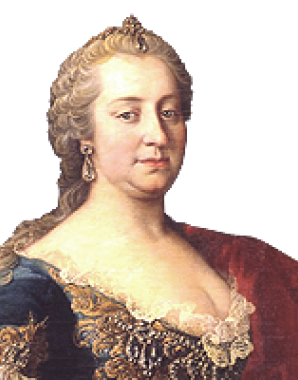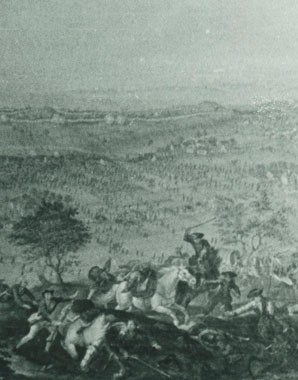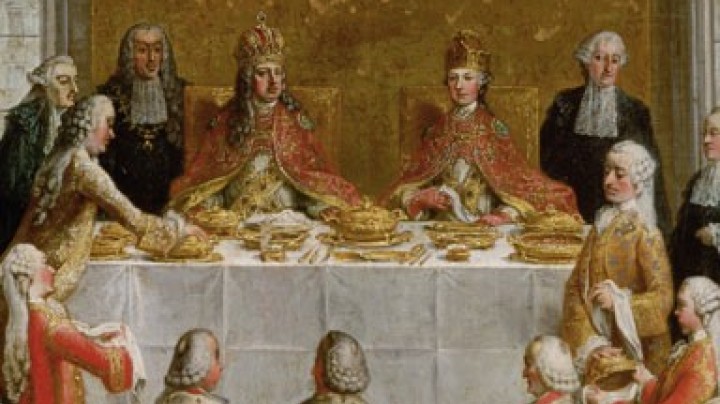Maria Theresa and Frederick II – opposites in all respects
The polarization between Austria and Prussia that had regularly reared its head since 1740 also gives rise to the question of the differing strategies adopted by the two nations in respect of their legitimization and demonstration of power.
Broadly speaking, a great difference can be seen between the Habsburg lands and Prussia in their attitude towards and exploitation of the visual arts. Specific elements of the way in which the Habsburgs displayed themselves to the world, such as the special significance of the family, which depended in no small measure on the empress’s prodigious brood of children, had no equivalent on the Hohenzollern side. Nor did the Prussian king seek to vest his image as ruler with sacred significance, as Maria Theresa did in almost all fields, this being an important element of Catholicism, which gave her life both meaning and principles by which to live. This once again emphasizes Frederick’s far more secular attitude in contrast to Maria Theresa, for whom a key role was played by the incorporation of her multi-faceted image into a primarily religiously defined framework.
The conflict between the Habsburgs and the Hohenzollerns was probably at its most acute in the context of political journalism and caricature. Following closely behind this is the genre of the medal, which was heavily promoted by the Habsburg dynasty in the second half of the eighteenth century, not least in awareness of their great past. The most concrete manifestation of the rivalry between Austria and Prussia can be seen in a Prussian medal by Nikolaus Georgi commemorating the Battle of Leuthen on 5 December 1757, which was a direct riposte to the – iconographically identical – medal designed by Anton Moll, struck to mark the Austrian victory over Frederick at Kolín in 1757. Here images come up against counter-images – a circumstance that also demonstrates the importance of visual culture as a vehicle of political communication. Packing a greater punch than words, whose use had to be carefully considered for legal reasons, images could be deployed far more directly to wage war ‘by other means’. Offsetting these political antagonisms was the fact that both sides – like many other political players of the time – saw themselves as the heirs of ancient Rome. Viewed from this perspective, the eighteenth-century longing for the resurrection of the grandeur of antiquity seemed almost like a bond of unity.


















